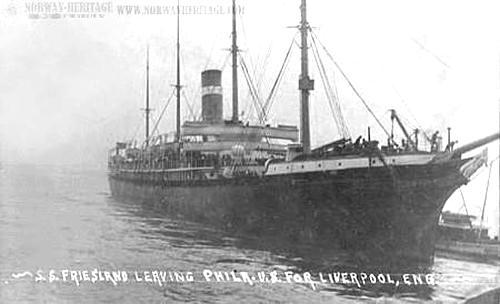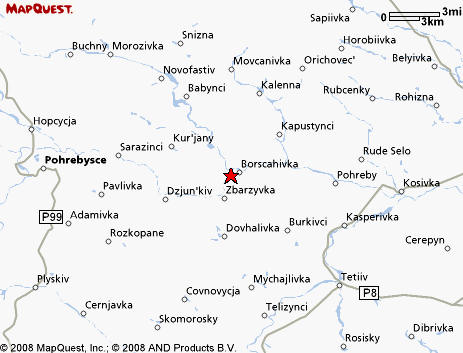|
Sam
and
Minnie's
arrival
We don't know when the
first Jews from Tetiev came to Cleveland,
but by 1900 there were enough to form the
Tetiever Verein, a landsmanshaft for
the mutual benefit of its members. (See
ECH.) Probably
influenced by friends or relatives from
Tetiev already in Cleveland, Minnie's first
son, Beryl Linetzky, age 24,
had come in 1907 with his wife Rose. They
were followed in 1908 by Nathan and Ben,
Minnie's second and third oldest
sons.
Sam
Klausner arrived in Cleveland in 1910 (age
42) with his oldest daughter Mary (age 13)
and son Harry (age 6). We
have Mary's lengthy account of
her passage with her father (see
Mary's letter) which says they sailed in
August 1910, but searches of ship manifests
and Ellis Island records do not find Sam, Mary and Harry.
On November 21, 1910
Minnie and four of her children (Jake, Abe,
Sarah and Rose) arrived in
Philadelphia on
the American Line SS Friesland, which had departed from Liverpool, England
twelve days before. An old ship with one
funnel and four masts rigged for sail, SS
Friesland could hold 928 passengers, 600 of them in
third class. The next year it
would bought by an Italian line and then
scrapped in 1912.
|
|
 |
|
Ship's
passenger manifest
The
manifest
lists Mindel Klausner, 44 years old, able to read
and write. For "Race or People" she
is "Hebrew". Her country of origin
is Russia and we see the name of their home
town. Below her name will be found Mische
(14 years), Sore (10), Leif (8) and Ruche
(11 months - actually 2 1/2). To see page 30 of the manifest,
click here.
While Sam isn't
found on the manifest, the facing page
(31) indicates that Minnie
is coming to Cleveland to meet him.
It says:
"Husband S. Klausner 2528 East 30th Street.
Cleveland Oh", then follows a hard-to-read
note "Husband five months .... 2 weeks ago"
This posting and their 1920 census record
confirms that they both came in 1910.
See 1920
census record. To see page 31 of the manifest,
click here.
The entry for Minnie is on line 7.
Carole
Schonberg, daughter of Rose Klausner, writes:
I believe they came to Cleveland
as some members of their shul
and shtetl were already here.
Sam, the father, and sons Nathan
and Ben came first with
Beryl.... then they sent for the
oldest sister, Mary to come and
keep house for them.
They settled around 55th and
Woodland - house and barrel
making business. After that,
Minnie and the younger children
followed.
My mother, Rose, being the baby
of the family was only two years
old. Babes-in-arms went free on
the ship -- so they say her feet
never touched the floor of the
ship, for fear of someone seeing
her and charging for her.
|
|
|

